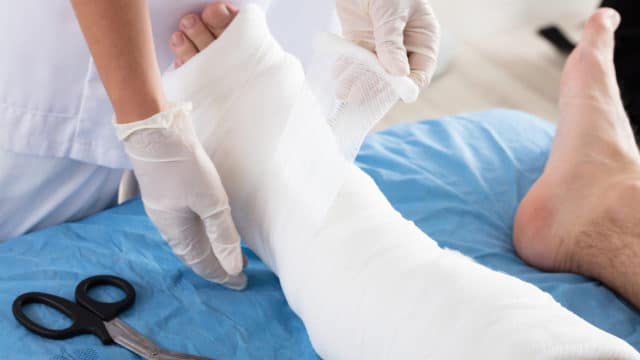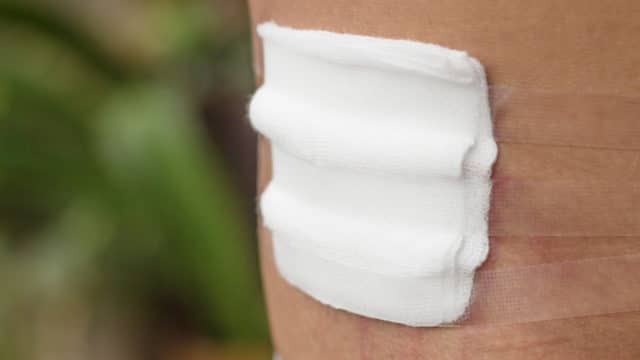Understanding Wound Debridement: Promoting Faster Healing
What is Wound Debridement?
Wound debridement is the process of removing dead tissue from wounds. The dead tissue may be black, gray, yellow, tan, or white. Foreign material may also be on the wound. It may need to be removed. Your wound care doctor will let you know if dead tissue needs to be removed from your wound. Your physician or healthcare provider will talk to you about the procedure before he begins. He will talk to you about the different ways to remove the dead tissue. He will talk to you about the benefits of removing the dead tissue. He will also talk to you about the risks. Wound debridement is a crucial step in the wound healing process, as it helps create a clean and healthy wound bed that promotes the growth of new tissue.
Why Does My Wound Have to be Debrided?
- Wounds can heal faster if dead tissue is removed. Dead tissue can trap bacteria. Bacteria may lead to wound infections. Bacteria can cause odor.
- Wounds that have dead tissue take longer to heal. New tissue cannot grow.
- Dead tissue can hide pockets of pus. Pockets of pus can develop into an infection.
- Infection can prevent your wound from healing. Infection can get worse. It can cause a life-threatening illness. It can lead to an amputation if the leg is involved.
- Removing dead tissue on a regular basis keeps it clean. It will help your wound grow new tissue. Your wound can heal faster.
Wound debridement is essential for preventing infections, promoting the growth of healthy tissue, and accelerating the overall healing process.
What Should I Expect When Dead Tissue is Removed?
You can expect:
- The staff to explain the procedure
- The staff to explain the benefits
- The staff to explain the risks
- The staff to place you in the most comfortable position to allow access to the wound while the dead tissue is removed
- The staff to offer to numb your wound before the dead tissue is removed
- The doctor to stop immediately if you tell them you are uncomfortable or have pain
The wound care team will prioritize your comfort and ensure that you are well-informed about the procedure and its expected outcomes.
How Will the Dead Tissue be Removed From My Wound?
There are a few ways that dead tissue can be removed from your wound. Your doctor may use one or even more than one way to remove the dead tissue:
- Sharp debridement: This may be done every week. It will keep the wound clean. It will help your wound to heal faster. The dead tissue will be removed with a sharp instrument. A dressing is then applied. It is to help control bleeding. Sometimes a sharp debridement may need to be done in the operating room. Sharp debridement is a precise method that allows for the selective removal of dead tissue while preserving healthy tissue.
- Autolytic debridement: This does not cause pain. A moist wound dressing is used with your body’s ability to break down dead tissue. This may be used between visits. When it is used your doctor may not have to do aggressive sharp debridement during your visit. Autolytic debridement is a gentle method that relies on the body’s natural enzymes to break down dead tissue, making it an ideal choice for patients who cannot tolerate more aggressive methods.
- Enzymatic debridement: Sometimes called chemical debridement. A medication is used to break down the dead tissue in your wound. It can be used with sharp debridement. Enzymatic debridement is a selective method that uses topical medications to break down dead tissue without harming healthy tissue.
- Mechanical debridement: Whirlpool, pulse lavage or wet to dry saline dressings are used to remove dead tissue. It can also hurt healthy and new tissue. This is not used much. Mechanical debridement, while effective, is less commonly used due to its potential to damage healthy tissue.
Wound debridement will speed up the healing process. This may cause some discomfort. It is generally tolerated well. Be sure to tell your doctor if you experience pain or discomfort when the dead tissue is being removed. He will take measures to make you more comfortable. We want you to be as comfortable as possible as we help heal your wound as fast as possible. The wound care team will work closely with you to ensure that the debridement process is as comfortable and effective as possible, tailoring the method to your specific needs and preferences.
When Should You Call the Wound Care Center Staff?
If you have:
- Uncontrolled pain
- Bleeding that won’t stop
- Severe burning sensation in the wound
- Any sign of infection
It is essential to contact the wound care center staff immediately if you experience any of these symptoms, as they may indicate a complication that requires prompt attention.
Read a white paper on the Use of Modalities in Wound Care on Debridement.
At Healogics, our team of wound care specialists is dedicated to providing the highest quality care for patients with chronic wounds. We utilize the latest debridement techniques and technologies to promote optimal healing and improve patient outcomes. If you or a loved one is living with a non-healing wound, contact a Healogics Wound Care Center® near you to learn more about our advanced treatment options and compassionate care.



